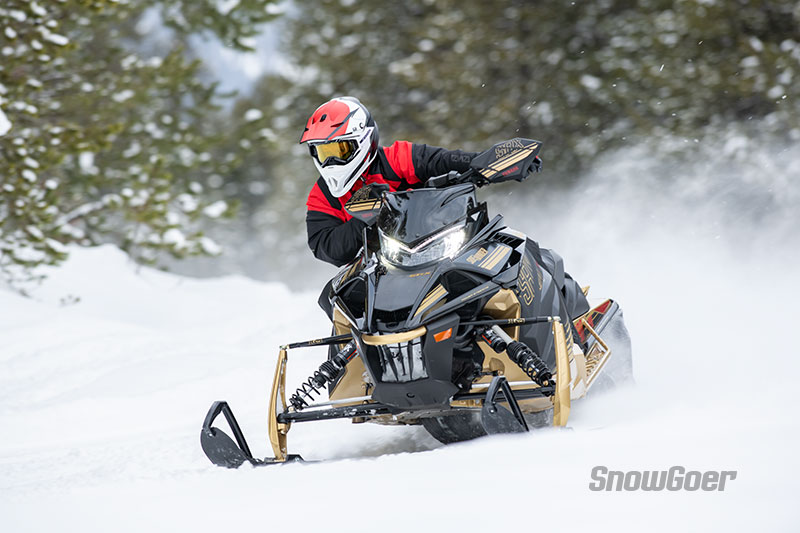 This isn’t your father’s Phazer. Yamaha made big waves by thinking outside the polyhedron when remaking a machine for the Phazer nameplate. Except for a brief, recent hiatus, a Phazer has been in Yamaha’s lineup since 1984.
This isn’t your father’s Phazer. Yamaha made big waves by thinking outside the polyhedron when remaking a machine for the Phazer nameplate. Except for a brief, recent hiatus, a Phazer has been in Yamaha’s lineup since 1984.
If you’re considering the radical-looking Phazer GT, Yamaha thinks it knows who you are. You’re 42, you typically ride 1,686 miles per year. A slightly different person will look at the FX: someone 24 to 40 who rides 1,694 miles annually.
The Phazers use the same 80 hp four-stroke engine and share some basic features, such as the tall seat styled after the YZ off-road motorcycle, a handlebar-mounted digital gauge pod, wide floorboards, quick-release bodywork and styling it calls “naked.” They use a 14- by 121- by 1-inch track. They come with electric start and a push-button electric shift reverse.
The Phazer sits on a new chassis called FX. It’s purpose-built around the Genesis 80FI engine and is lighter than the Deltabox/Deltabox II chassis.
The seating style is 3.2 inches taller and 15.6 inches more forward than the Nytro. The handlebars are 5.9 inches taller and 13.2 inches farther forward than the Vector ER.
The differences are with the suspensions and calibration, the windshield height (taller on the GT), the wind deflectors at the knees (also the GT) and the tall, hooked handlebars (the FX).
GT
Front Suspension: Independent Double Wishbone; Shocks/Travel: KYB HPG Aluminum/9 inches; Rear Suspension: Second-generation Pro Active; Shocks/ Travel: KYB HPG/16.1 inches; Features: The front suspension setup is new to Yamaha this year, with longer A-arms, new spindles and a bar-type sway bar for improved handling and flat cornering. The rear shocks are not rebuildable.
Genesis 150FI
This is the second year for this Yamaha four-stroke powerhouse. It’s a 998cc, 150 hp fuel-injected engine. It’s had no major changes over last year.






